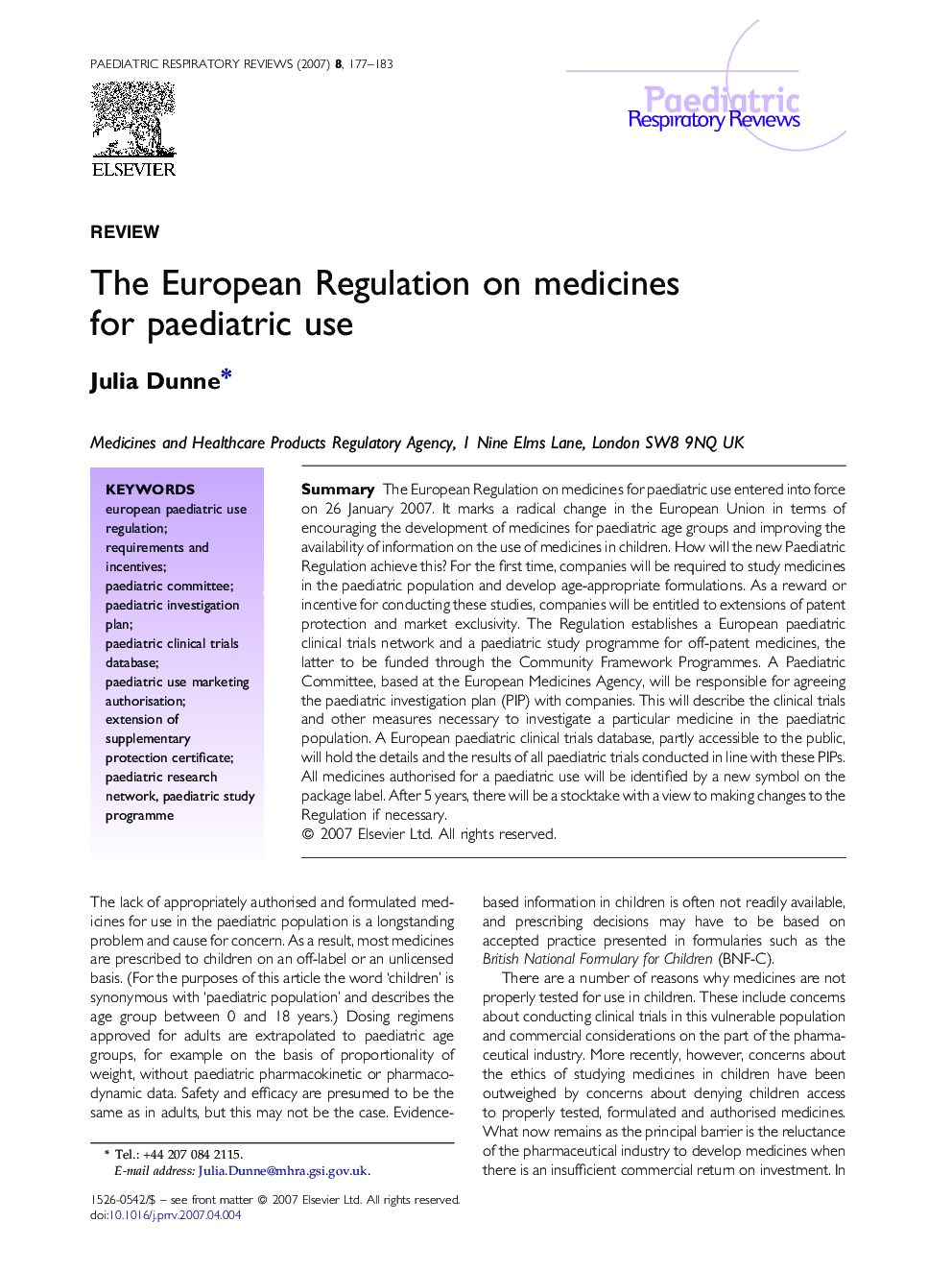| Article ID | Journal | Published Year | Pages | File Type |
|---|---|---|---|---|
| 4171588 | Paediatric Respiratory Reviews | 2007 | 7 Pages |
SummaryThe European Regulation on medicines for paediatric use entered into force on 26 January 2007. It marks a radical change in the European Union in terms of encouraging the development of medicines for paediatric age groups and improving the availability of information on the use of medicines in children. How will the new Paediatric Regulation achieve this? For the first time, companies will be required to study medicines in the paediatric population and develop age-appropriate formulations. As a reward or incentive for conducting these studies, companies will be entitled to extensions of patent protection and market exclusivity. The Regulation establishes a European paediatric clinical trials network and a paediatric study programme for off-patent medicines, the latter to be funded through the Community Framework Programmes. A Paediatric Committee, based at the European Medicines Agency, will be responsible for agreeing the paediatric investigation plan (PIP) with companies. This will describe the clinical trials and other measures necessary to investigate a particular medicine in the paediatric population. A European paediatric clinical trials database, partly accessible to the public, will hold the details and the results of all paediatric trials conducted in line with these PIPs. All medicines authorised for a paediatric use will be identified by a new symbol on the package label. After 5 years, there will be a stocktake with a view to making changes to the Regulation if necessary.
